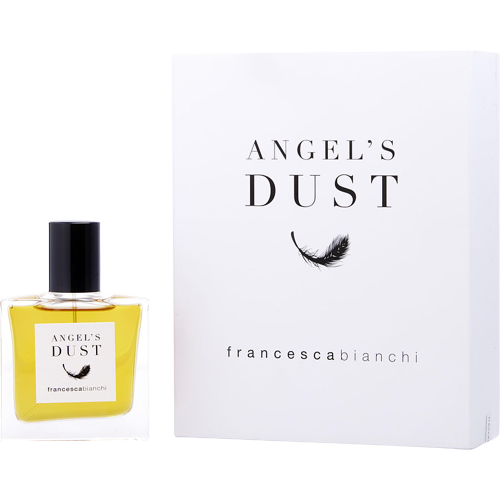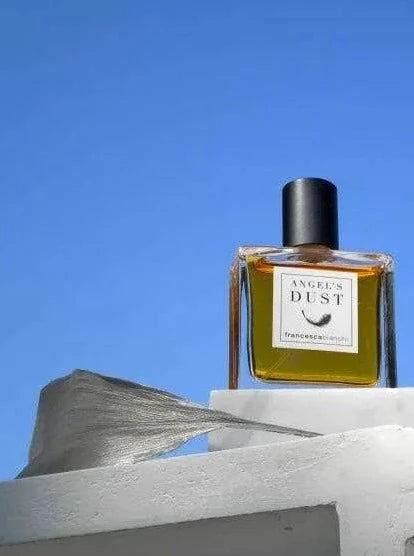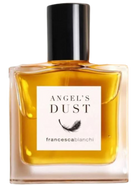Angel's Dust is a 2016 release from luxury niche perfumer Francesca Bianchi, who treats perfumery as "an intellectual process," inspired by "the power of what it means to be human, by the wish to connect with people’s inner life, the desire to spark an emotion in them and make them feel at home in their own bodies, offer solace, or just a quick fix for a bad day." Angel's Dust, a Floral Woody Musk fragrance, has a scent profile of powdery, amber, iris, warm spicy, vanilla, yellow floral, woody, sweet, floral, and violet notes.
Notes
Black Pepper, Mimosa, Rose, Iris, Musk, Sandalwood, Tolu Balsam, Benzoin, Vanilla
From Francesca Bianchi:
Description: Powdery, Rosy, Balsamic
Mood: classic, vintage, soft, decadent
In a dusty boudoir of bygone times, a mistress is putting on lipstick, while waiting for her lover to arrive.
Face powder is floating in the air, mixed with the smell of roses and the woody effusion of the boiserie. The innocence of powdery musks blends with the decadence of sensual balsamic notes.
This is an extrait de parfum, so use sparingly as the concentration is 25%. It has a great longevity (an average of 12h).
The Making of Angel's Dust
While working on Angel’s Dust, I was studying my way into an innocent, light-as-a-feather feminine touch but at the same time seducing, daring and corrupt. The vintage, old-style twist was not voluntary but a necessary consequence of my idea of a femininity of past times, where women had a wooden boudoir and spent hours to put powder and other beauty secrets on their face and body, and didn’t care to affirm themselves through a career but would exert their power through Beauty and Seduction. Then I softened the powdery-iris-rose part by adding a mixture of resins, representing a dirty experienced sensuality.
Some movies and books provided me with inspiration. Les Liaisons Dangereuses, for instance, represented exactly the sophisticated and corrupted atmosphere I had in mind! Another beautiful memory is Marie Antoinette as depicted in Sofia Coppola’s movie. I obviously like Rococo, but what I like specifically in that movie is the femininity she represents: shoes, sins, libertinage, cakes, and absolute mindlessness, without any guiltiness. Some reviewers have compared Angel’s Dust to some Guerlain mythological scents (Luca Turin mentioned Guet-Apens / Attrape Coeurs). I am honoured by such a comparison."
Note: Samples are sold by the 1ml. You may purchase up to 2ml. Samples of 1ml or less will come in a glass vial with a dabber. Samples larger than 1ml will come in small glass spray bottles. All samples will be consolidated unless expressly requested otherwise.
INGREDIENTS
Alcohol denat., parfum, aqua (water), benzyl alcohol, benzyl benzoate, benzyl cinnamate, cinnamic aldehyde, cinnamyl alcohol, citronellol, eugenol, geraniol, gamma-methyl ionone, hydroxycitronellal, limonene, linalool.
Fragrance Vault is an official stockist of Francesca Bianchi,










